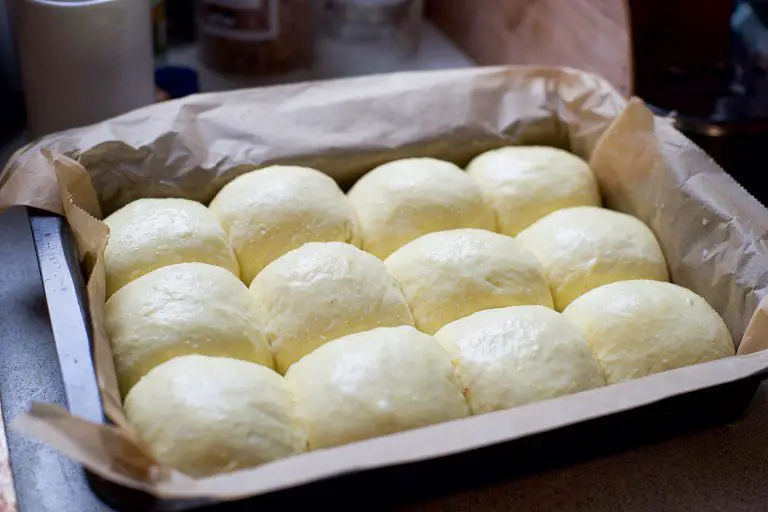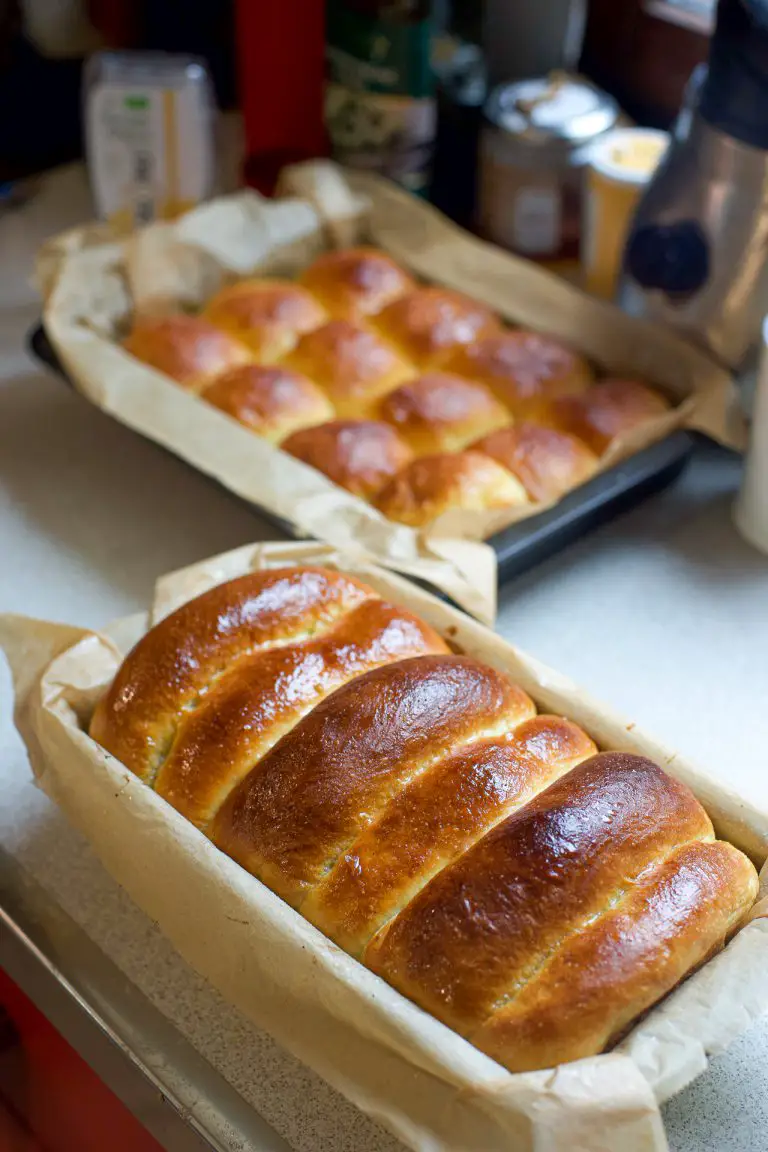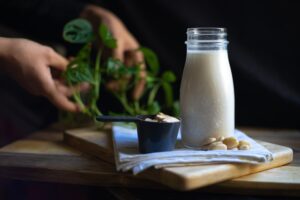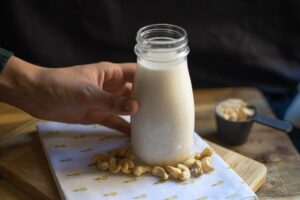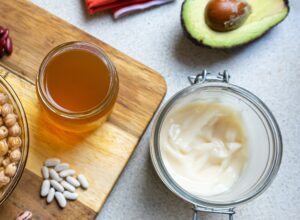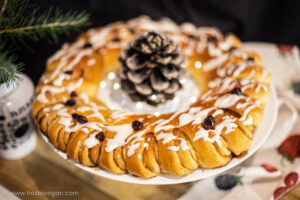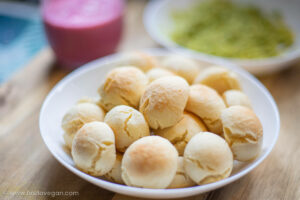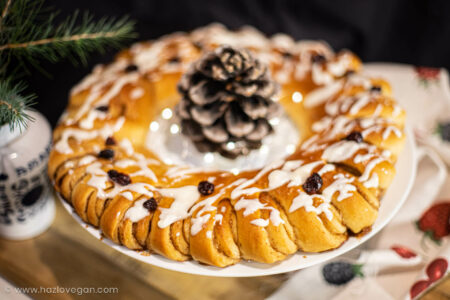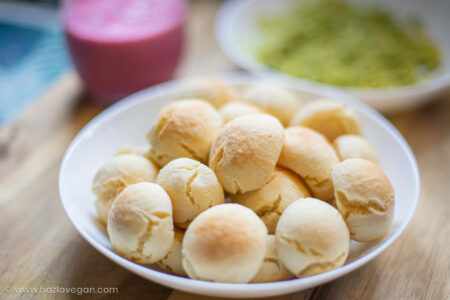Vegan homemade hawaiian rolls
This recipe could have affiliate links. For more information visit this link .
These vegan homemade hawaiian rolls is a sweet, soft and fluffy variation on the French brioche bread recipe.
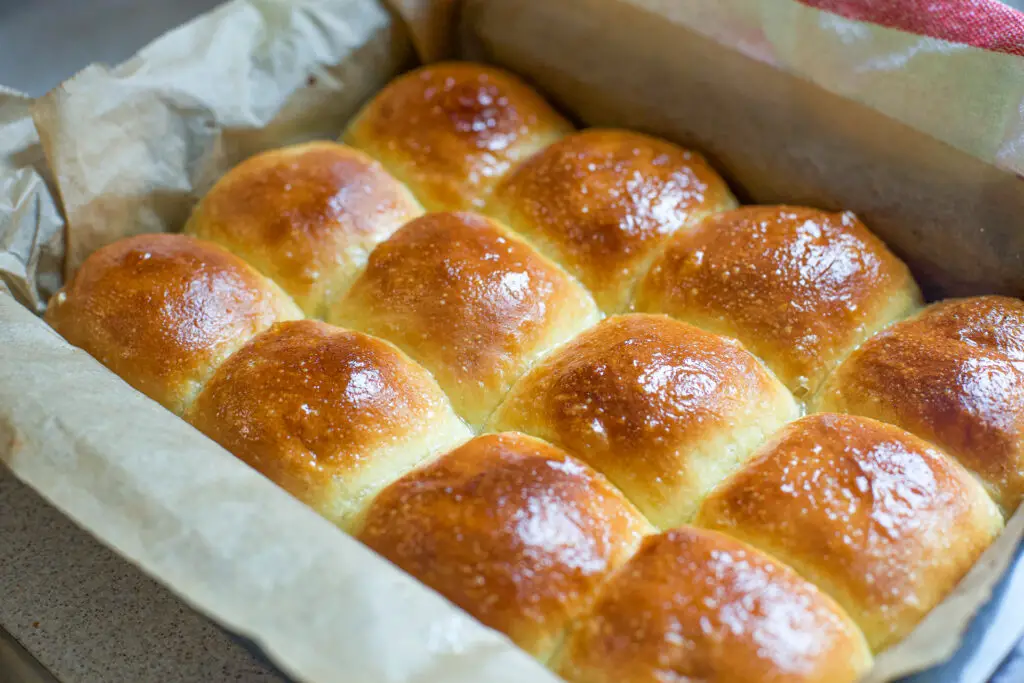
This post is also available in: Español
These vegan homemade Hawaiian rolls (originally called just “Hawaiian rolls”) is a variation on the French brioche bread recipe, which is a bread dough enriched with added fat and eggs with a soft and fluffy result. An example of where brioche bread is used is for hamburger bread or hotdogs, but in this case it is a much sweeter version that is consumed a lot in Latin America for breakfast or anytime, with margarine, manjar or white cheese.
I must admit that this is another fruit of my nostalgia. At home, when we lived in Ecuador we loved sweet bread and ate it regularly, if not daily.
Why Hawaiian?
And why is it called Hawaiian bread? Simply because the recipe of this variant, has added as an ingredient the liquid from canned pineapples instead of water, to increase the sweetness and give a tropical touch to this bread.
To make it even more Hawaiian (wait, there are coconuts in Hawaii?), I decided to add coconut essence, so I could officially call them piña colada rolls, but obviously you can even omit the pineapple juice and add vanilla to make it a neutral sweet bread. This is just one variation that turned out too tasty not to share.
Vegan Brioche Bread – is it possible?
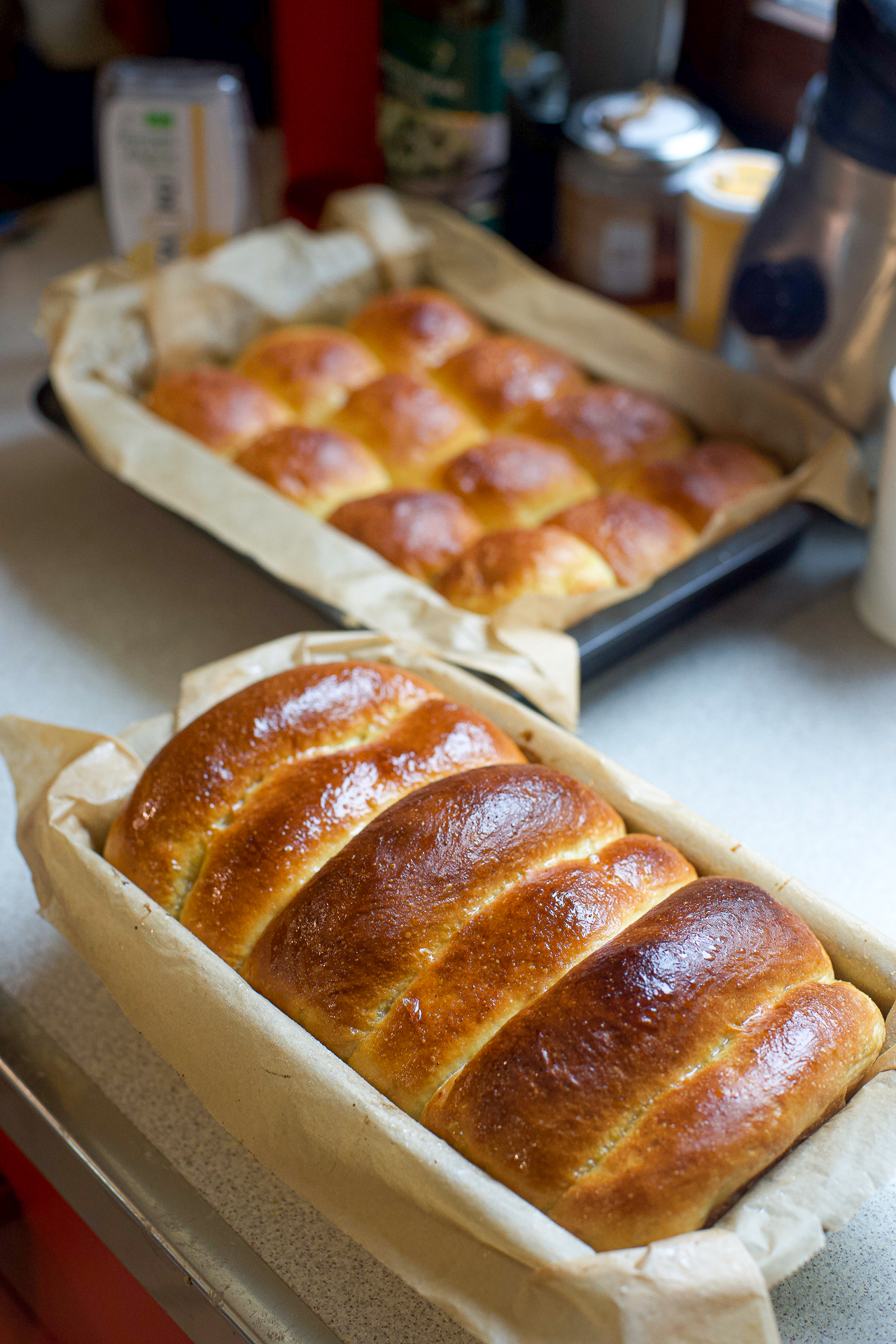
Absolutely YES. Brioche bread is a bread dough enriched with milk, eggs and fat. But these ingredients contain things that are not exclusive to animal products. In addition we will use a special technique called “water roux” which will make them even softer and extend their shelf life and freshness for longer.
Let’s go in order:
Replacing milk
It contains protein and fat and sugars (lactose). The milk with properties closest to cow’s milk is naturally soy milk, which contains all of the above. It also naturally contains lecithin, which makes it possible for fats, in this case vegetable oils, to dissolve in water, i.e. it is an emulsifier, just like egg. Adding additional soy or sunflower lecithin can help to almost completely eliminate the need for egg in recipes, as we increase the binding effect that is required.
Replacing eggs
It is another ingredient composed mainly of water, fat (yolk), proteins and lecithins. In this case we will use aquafaba, as it contains a certain amount of suspended protein, which is better than the effect of water. In this dough, the effect of the egg is reduced to its binding effect, and to a certain extent to its colour, which gives the doughs a yellow colour, but this is an aesthetic detail that can be easily replaced. As mentioned above, the binding effect can easily be achieved with starches dissolved in water, as used for thickening or curdling sauces and creams.
Replacing butter
This is without doubt the easiest ingredient to replace. Butter is basically invert fat, extracted from whipping cream. It acquires a solid state when cold and melts when subjected to heat.
There are fats with these characteristics of 100% vegetable origin and others of vegetable origin with some help, such as the hydrogenation process. There is not a very good reputation for this process on fats, as it is said to have a negative impact on the health of the arteries, so it is always better to opt for fats that solidify naturally, such as coconut oil, shea and cocoa butter, palm oil being the most common one used industrially, but make sure the source is sustainably sourced, because its production has a terrible impact on the home of orangutans in Indonesia and it is our duty to stop cooperating with industries that are so harmful to endemic and endangered species.
The simplest alternative is margarine or vegetable shortening (with sustainably sourced palm oil or without palm oil at all), but in bread, I have found that vegetable oil such as sunflower or corn oil does not noticeably affect the richness of the dough, so in most cases I opt for this.
The ingredients to be used in this recipe:
White wheat flour
It is the basis of these vegan homemade hawaiian rolls, the most recommended is bread flour, which contains a high protein content and is optimised for bread doughs. If you only have plain flour, that’s fine too, but it will take a bit more kneading and kneading work, as flour with a low gluten content absorbs less water, so the dough will be more liquid and weaker, but the water roux or Thang zong technique will help you to achieve the same result.
Dry yeast
I use dried yeast in all my recipes, as it has a much longer shelf life, is practical and more manageable. The ratio of dry yeast to traditional yeast is 1:3, three grams of traditional yeast equals one gram of dry yeast. That’s why the 10g sachets are equivalent to a 30g block of traditional yeast, which is the ration for raising one kilo of flour.
Cane or white sugar
Another important ingredient in this recipe is sugar. It is preferable to use organic sugar of which we know the origin, as some white cane sugars use animal bones in their refining process (yes, as incredible as it sounds) or use unrefined brown sugar or beet sugar, which does not use this kind of by-product in its extraction. It is possible to make these vegan homemade Hawaiian rolls recipe with other types of natural sweeteners, such as coconut sugar, agave syrup and maple syrup, but that would greatly increase the cost and difficulty of sourcing such specific ingredients. It is better to choose the ingredients you have and not be limited by this when cooking.
Margarine, Refined coconut oil (unflavoured) or sunflower oil
This ingredient is what will give the fatty element to the recipe that will help bind it together to make it softer and moister and give it a tighter crumb that resembles a sponge cake, characteristic of brioche bread. I have tried making brioche with just oil and water and it works perfectly. In this recipe it might be worth adjusting the amount of water a little for that reason.
Egg replacement
To replace the egg in this recipe we will use potato starch dissolved in aquafaba, I use a couple of other additives that I feel help to create structure in the recipe which are xantham gum and/or granular soy lecithin, but they are optional and neither will prevent the vegan homemade Hawaiian rolls from to be a success.
Pineapple Juice (liquid from the canning jar)
This recipe uses pineapple juice instead of water as liquid, it is totally optional and can be replaced by water or vegetable milk.
Important note on the recipe
For this recipe, as for all recipes, I strongly recommend having a digital kitchen scale, it doesn’t have to be professional, a cheap one will do, as well as measuring cups and spoons. Because what we know as measuring cups is too subjective.
There are thousands of different types of cups with different capacities and it is very difficult to calculate how full a spoon has to be to consider it “a spoonful” and a spoonful of flour does not weigh the same as a spoonful of water, for this and much more, to increase the success of recipes, it is more than necessary to have universal units of measurement or everything could fail without imagining why.
Pan brioche dulce estilo Hawaiano
Equipment
Ingredients
Water Roux
- 40 grs harina blanca
- 200 grs de agua fría
Masa final
- 580 grs harina blanca normal
- 120 grs jugo de piña de lata o 160 grs de leche vegetal o agua
- 40 grs leche vegetal
- 8-9 grs levadura seca granulada
- 56 grs aceite de coco ablandado o margarina
- 1 cdta esencia de coco (opcional)
- 140 grs azúcar
- 7 grs sal
Reemplazo huevos
- 30 grs almidón de papa
- 80 grs Aquafaba
- 1 pizca CMC o goma xantana Opcional
- 1 pizca cúrcuma (opcional)
Instructions
- Para el water roux: En una olla pequeña disolver los 40 grs de harina en el agua con un batidor de alambre hasta que no queden grumos. Encender el fuego a llama media y revolver hasta que la consistencia sea similar a la de crema pastelera, esto no debería tomar más de 3 minutos a llama media. En este punto apagar la llama y reservar aparte para dejar enfriar.
- Mientras se enfría el water roux pesar el harina en un bowl grande, agregar el azúcar y la levadura seca y mezclar, dejar aparte.
- Realizar la mezcla de reemplazo de los huevos: Mezclando 30 grs de almidón de papa con 80 grs de agua, goma xantana, y cúrcuma en polvo, lo que dará como resultado una crema espesa de color amarillento por la cúrcuma, lo cual le dará el color amarillo característico de la masa brioche.
- Agregar el water roux en el centro de la mezcla de harina, el reemplazo del huevo, la esencia de coco e incorporar, luego agregar el líquido de las piñas (o leche vegetal) poco a poco mientras incorporas con una paleta o cuchara de palo, cuando todo esté incorporado agregar el aceite de coco ablandado y desmenuzado con las manos y finalmente la sal. Incorporar hasta lograr una masa y dejar reposar 5 minutos.
- Luego de 5 minutos de reposo, empezar a amasar hasta desarrollar el gluten y obtener una masa elástica y lisa, a mano son aproximadamente 15 o 20 minutos con el movimiento de aplastar con la palmas de la manos, estirar hacia delante y luego recoger con las puntas de los dedos simulando lo que yo llamo el movimiento de las olas hacia adelante. Cuando la masa esté lisa y elástica, formar una bola y dejar reposar tapada en un lugar tibio por 1 hora hasta que duplique en tamaño o en el refrigerador toda la noche.
- Formando el pan: Una vez reposada la masa, dividir en bollitos de 45 grs, y bolear cada bola poniéndolos en un molde de horno forrado con papel manteca, para evitar engrasarlo (puede atraer calor) dejar un espacio entre ellos, ya que crecerán bastante y se juntarán en el horno lo que hará que se amolden y se junten, conservando su suavidad como si fuera un solo pan.
- Reposo final: Dejar reposar los panes formados tapados con película plástica aproximadamente 45 minutos o hasta que hayan crecido a su tamaño final.
- Pintar con media cucharadita de jarabe de maple disuelto en poca agua o leche de soya. Precalentar el horno a 190º centígrados 10 minutos antes, introducir al horno una bandeja a la vez y hornear por 20 minutos.
- Sacar del horno, pintar nuevamente con la mezcla, espolvorear azúcar granulada y dejar enfriar tapados con un paño de cocina para conservar su humedad, estarán absolutamente suaves al enfriarse.
Notes
- Puedes congelar este pan luego de enfriarlo, (si es que no se acaban todos de una vez) para conservar su frescura y descongelarlos la noche anterior al consumo para tener cada mañana pan fresco.
- Al formar los bollos, también se pueden separar completamente y hacerlos separados completamente individuales o incluso hacer 4 rollitos grandes, poner en una budinera y hacer un pan de molde dulce. Con esta receta yo hice una bandeja con bollitos juntos y un molde dulce.
Nutrition
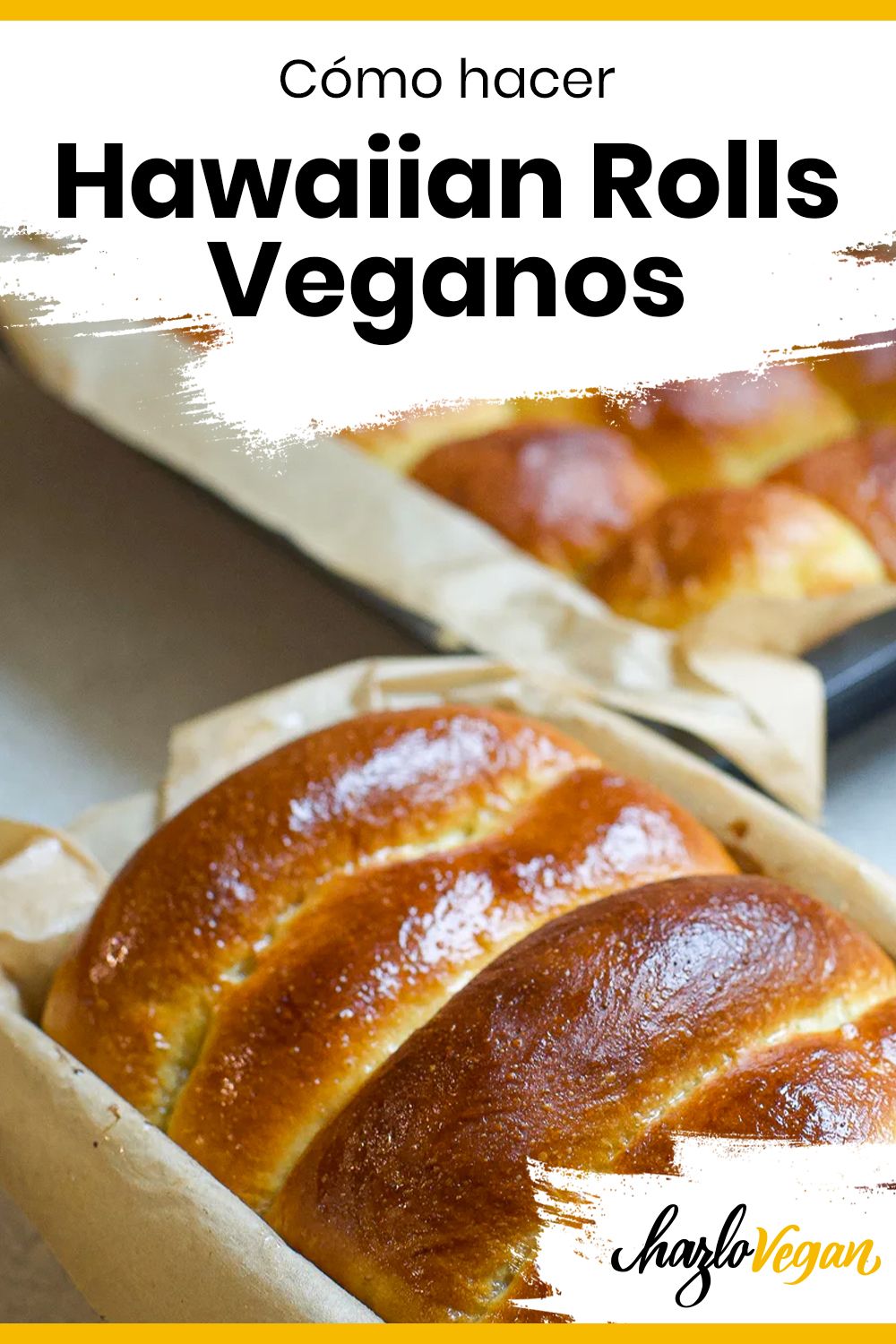
Thank you very much for reading Hazlo Vegan, if you want to be up to date with the recipes you can subscribe in the form on the right bar to receive them periodically in your mail, you can also comment and follow me on Instagram and Pinterest. If you make any of these recipes, don’t forget to upload a photo to show the world what vegans eat, using the hashtag #hazlovegan and mentioning me as @hazlovegan to keep me updated.
This post is also available in: Español


